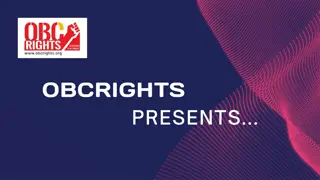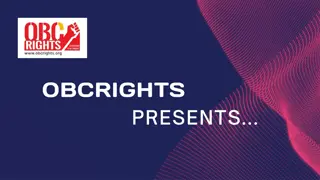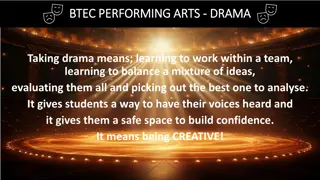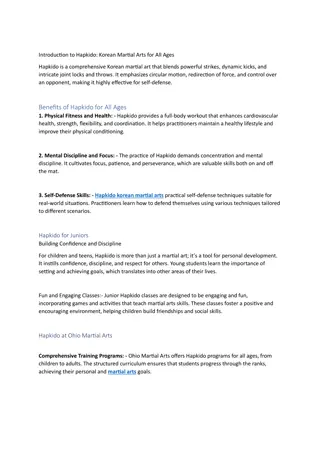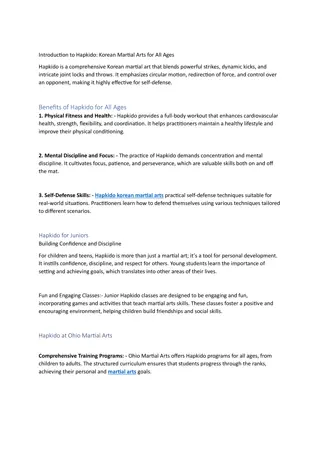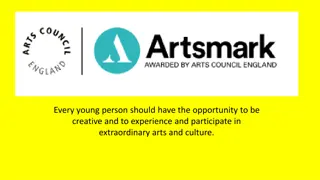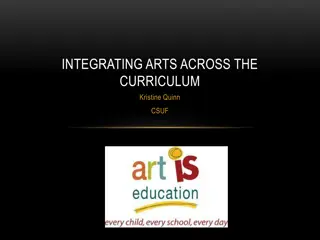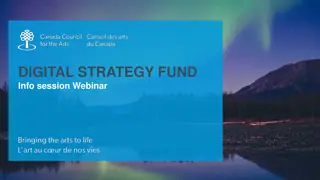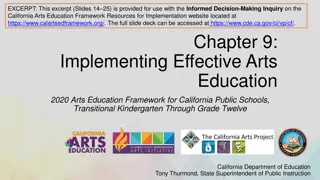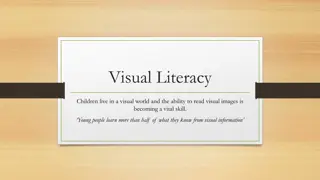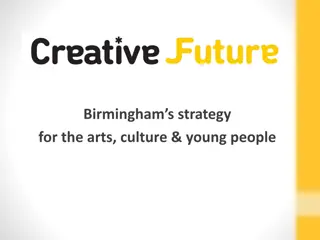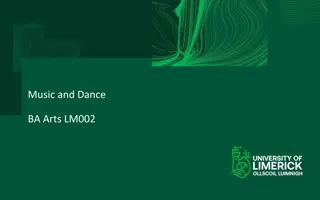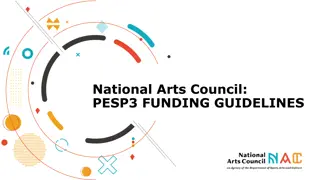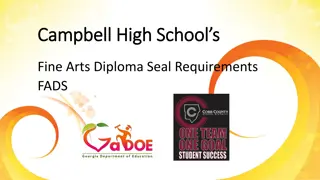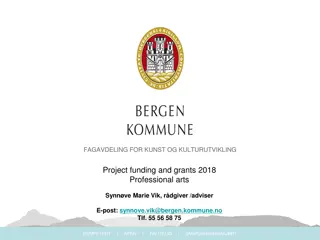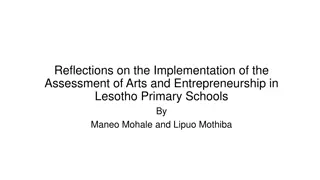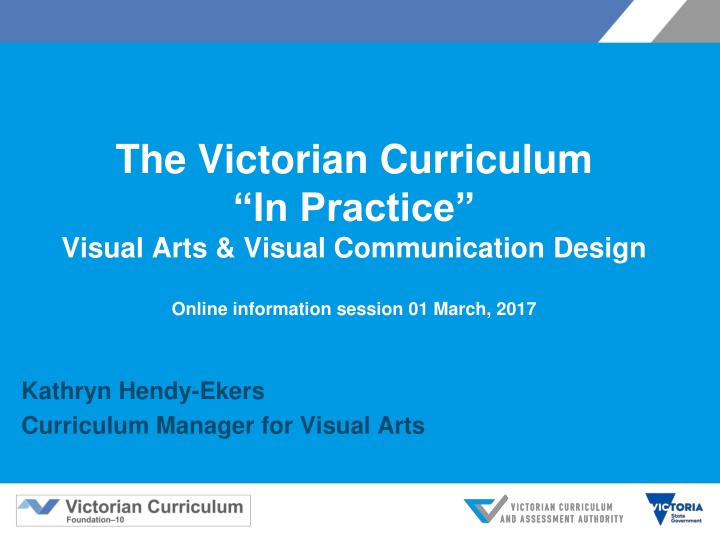
Visual Arts & Communication Design Curriculum in Practice
Explore the strands, learning focus, and content descriptors of the Victorian Visual Arts curriculum. Discover key ideas, practices, and achievement standards for students in the field of Visual Arts.
Download Presentation

Please find below an Image/Link to download the presentation.
The content on the website is provided AS IS for your information and personal use only. It may not be sold, licensed, or shared on other websites without obtaining consent from the author. If you encounter any issues during the download, it is possible that the publisher has removed the file from their server.
You are allowed to download the files provided on this website for personal or commercial use, subject to the condition that they are used lawfully. All files are the property of their respective owners.
The content on the website is provided AS IS for your information and personal use only. It may not be sold, licensed, or shared on other websites without obtaining consent from the author.
E N D
Presentation Transcript
The Victorian Curriculum In Practice Visual Arts & Visual Communication Design Online information session 01 March, 2017 Kathryn Hendy-Ekers Curriculum Manager for Visual Arts
Strands F-6 7-10 Exploring ideas and improvising with ways to express/represent ideas Explore ideas and improvising with ways to express/represent ideas. Manipulating and applying the elements/concepts with intent Explore and Express/Represent Ideas Manipulating and applying the elements/concepts with intent Developing and refining understanding of skills and techniques Developing and refining understanding of skills and techniques. Structuring and organising ideas into form. Practices Structuring and organising ideas into form Sharing artworks through performance, presentation or display Sharing through performance, presentation or display. Present and perform Analysing and reflecting upon intentions Analysing and reflecting upon intentions. Examining and connecting artworks in context. Respond and interpret Examining and connecting artworks in context
Learning in Visual Arts Focus on the practices of visual artists in different cultures, contexts and environments. Thinking, responding, making. Viewpoints of responding and making artworks through the practices of the artist and the engagement of the audience. Key ideas and issues in contemporary art practice that reflect beliefs and values of society. Visual conventions: underlying structure of artworks. Style, art elements and art principles. Materials, techniques and processes that are used in artistic practice.
Visual Arts strands Strand Explore and Represent Ideas Explore ideas, experiences, observations, imagination Media Practices Present and Perform Respond and Interpret Experiment, select, apply Create and display artworks considering audiences, ideas and artists intentions and meaning. reflecting, questioning, analysing and evaluating as a viewer and artist Identify specific features and purposes of artworks from different periods of time and cultures. Materials, techniques, processes, technologies and visual conventions. . artworks and artists from different cultures and times.
Content Descriptors & Achievement Standards Level 7 Content Descriptors Achievement Standards Students identify, analyse and evaluate how other artists use materials, techniques, technologies, processes and visual conventions to express ideas and convey meaning. Explore & Express Explore the practices used by artists to develop expressions of themes, concepts or ideas in their artworks. Explore how artists used materials, techniques, technologies and processes to realise their own intentions in artworks. Students plan and make their artworks in response to exploration of techniques, technologies and processes used in their own and others artworks. Students plan and make their artworks in response to exploration of techniques, technologies and processes used in their own and others artworks. Visual Arts Practices Experiment with materials, techniques, technologies and processes to express ideas, concepts and themes in their own artworks. Develop skills in planning and designing art works and documenting artistic practice. Students demonstrate the use of materials, techniques, processes, visual conventions and technologies to express ideas and convey meaning in their work. Students identify, analyse and evaluate how other artists use materials, techniques, technologies, processes and visual conventions to express ideas and convey meaning. Present & Perform Present artwork considering how ideas can be expressed to an audience. Students plan and make their artworks in response to exploration of techniques, technologies and processes used in their own and others artworks. Students identify, analyse and evaluate how other artists use materials, techniques, technologies, processes and visual conventions to express ideas and convey meaning. Respond & Interpret Analyse how ideas and viewpoints are expressed in artworks. Identify and connect specific features of visual artworks from different cultures, historical and contemporary times. Students plan and make their artworks in response to exploration of techniques, technologies and processes used in their own and others artworks.
Learning In Visual Communication Design Visual Communication Design Practices Making and responding form the practice of the designer. Students develop understanding and skills when they view and make visual communication designs in response to audience needs. Design fields (Communication, Industrial & Environmental) and styles of design. Different audiences and contexts. Making and responding involve practical and critical understanding. Students consider the intentions of designer to communicate meaning and how viewers interpret and evaluate visual communication designs. Visualisation and presentation of ideas through materials, methods and presentation formats.
Learning in Visual Communication Design Design thinking & the Visual Communication Design Process Form a framework for the creation of Visual communications. Students respond to and write a brief, research and generate ideas, develop and refine visual communications. Students communicate ideas and information through the use of: drawing conventions using a range of media, materials and methods to visualise ideas. design elements and principles such as line, shape, colour, tone, texture, form, type, balance, contrast, scale and hierarchy. skills, techniques and processes in a range of methods to plan, develop and refine visual communications.
Visual Communication Design strands Explore and Represent Ideas Visual Communication Design Practices Use manual and digital drawing methods to create visual communications. Present and Perform Respond and Interpret Develop and present visual communications in response to a brief, audience and communication needs. Explore and apply, material, methods, media, design elements and design principles. reflecting, questioning, analysing and evaluating Identify and describe materials, methods and media in different historical, social and cultural contexts. Develop and present visual communications. Design fields: Industrial, environmental and Communication.
Relationships: Content Descriptors & Achievement Standards Level 9 - 10 Content Descriptors Achievement Standard Explore & Represent Develop and present visual communications that demonstrate the application of methods, materials, media, design elements and design principles that meet the requirements of a specific brief and target audience. Generate, develop and refine visual communication presentations. Within visual communication design fields, students develop briefs and visualise, generate and develop ideas in response to audience needs. Students manipulate design elements, design principles, materials, methods, media and technologies to realise their concepts and ideas for specific purposes, audiences and needs. Visual Communication Design Practices Use manual and digital drawing methods to create visual communication s in specific design fields of Environmental, Industrial & Communication Design. Students demonstrate their use of visual communication design skills, techniques, conventions and processes in a range of design fields. Students manipulate design elements, design principles, materials, methods, media and technologies to realise their concepts and ideas for specific purposes, audiences and needs.
Relationships: Content Descriptors & Achievement Standards Level 9 - 10 Content Descriptors Achievement Standard Students evaluate, reflect on, refine and justify their decisions and aesthetic choices. Present & Perform Develop a brief that identifies a specific audience and needs. Within visual communication design fields, students develop briefs and visualise, generate and develop ideas in response to audience needs. Present visual communications that meet the requirements of the brief. Students manipulate design elements, design principles, materials, methods, media and technologies to realise their concepts and ideas for specific purposes, audiences and needs. Respond & Interpret Analyse and evaluate the factors that influence design decisions in a range of visual communications from different historical, social and cultural contexts. Students analyse and evaluate the visual communications they make and view, and how visual communications from different historical, social and cultural contexts communicate ideas and information. Analyse and evaluate the use of methods, media, materials, design elements and design principles in visual communications from different historical, social and cultural contexts.
Visual Arts Progression 7 - 10 Achievement Standard L8 By the end of Level 8, students identify, analyse and evaluate how other artists use materials, techniques, technologies, processes and visual conventions to express ideas and convey meaning. Students plan and make their art works in response to exploration of techniques, technologies and processes used in the work of other artists. They demonstrate the use of materials, techniques, processes, visual conventions and technologies to express ideas and convey meaning in their artworks. Students identify and describe artworks and exhibitions from different cultures, times and places and how ideas are interpreted by audiences. Achievement Standard L10 By the end of Level 10, students analyse and evaluate how artists communicate ideas and convey meaning in artworks. Students identify the influences of other artists and analyse connections between techniques, processes and visual conventions in artworks to develop their own art practice. They select, and manipulate materials, techniques, processes, visual conventions and technologies to express ideas and viewpoints in their artworks. Students analyse and evaluate artworks and exhibitions from different cultures, times and places, and discuss how ideas and beliefs are interpreted by audiences.
Resource The Popular Pet Show National Portrait Gallery of Australia http://www.portrait.gov.au/conten t/popular-pet-show Use the resource in this link as a point of exploration of the artists in the exhibition for the theme of My Pet and I Graeme Drendel Billy 2016 http://www.portrait.gov.au/exhibitions/the-popular-pet-show-2016
Assessment Planning Visual Arts Students plan and make their art works in response to exploration of techniques, technologies and processes used in the work of other artists. Sample: Portrait series of me and my pet. Assessment Criteria Exploration of techniques, technologies and processes by other artists. Descriptor The student can describe the use of techniques and processes used by a range of artists in the National Portrait Gallery.
Students plan and make their art works in response to exploration of techniques, technologies and processes used in the work of other artists. Example: Portrait painting of me and my pet. Criterion Low Medium Research of other artists work. Exploration of painting techniques Planning of Composition Evaluation of artworks High Very High
Visual Communication Design Standards Achievement Standard L7 Achievement Standard L10 By the end of Level 8, students identify and describe how designers use visual communication practices to respond to briefs in different historical, social and cultural contexts. By the end of Level 10 students analyse and evaluate the visual communications they make and view, and how visual communications from different historical, social and cultural contexts communicate ideas and information. They apply this knowledge in the development of their own visual communication practices. Within visual communication fields, students develop briefs and visualise, generate and develop ideas in response to audience needs. They evaluate, reflect on, refine and justify their decisions and aesthetic choices. Students select and use appropriate drawing conventions, methods, materials, media, design elements and design principles to create effective visual communications. Students demonstrate their use of visual communication design skills, techniques, conventions and processes in a range of design fields. They manipulate design elements and design principles, materials, methods, media and technologies to realise their concepts and ideas for specific purposes, audiences and needs. Students evaluate how they and others are affected and influenced by visual communications from different cultures, times and places. They identify and describe practices of visual communication designers in visual communications from different cultures, times and places.
https://www.nla.gov.au/exhibitions/the-sell This exhibition from the National Library of Australia is a good starting point for planning a unit for Visual Communication Design
Assessment planning Students select and use appropriate drawing conventions, methods, materials, media, design elements and design principles to create effective visual communications. Topic: Travel poster Assessment Criteria Descriptor Use of observation and visualisation drawings in planing and developing posters.
Students select and use appropriate drawing conventions, methods, materials, media, design elements and design principles to create effective visual communications. Topic: Travel poster Criterion Low Medium High Very High Use of observation and visualisation drawings in planing and developing posters.
Contact Kathryn Hendy-Ekers Email: Hendy-Ekers.Kathryn.L@edumail.vic.gov.au Phone: 03 9032 1697



